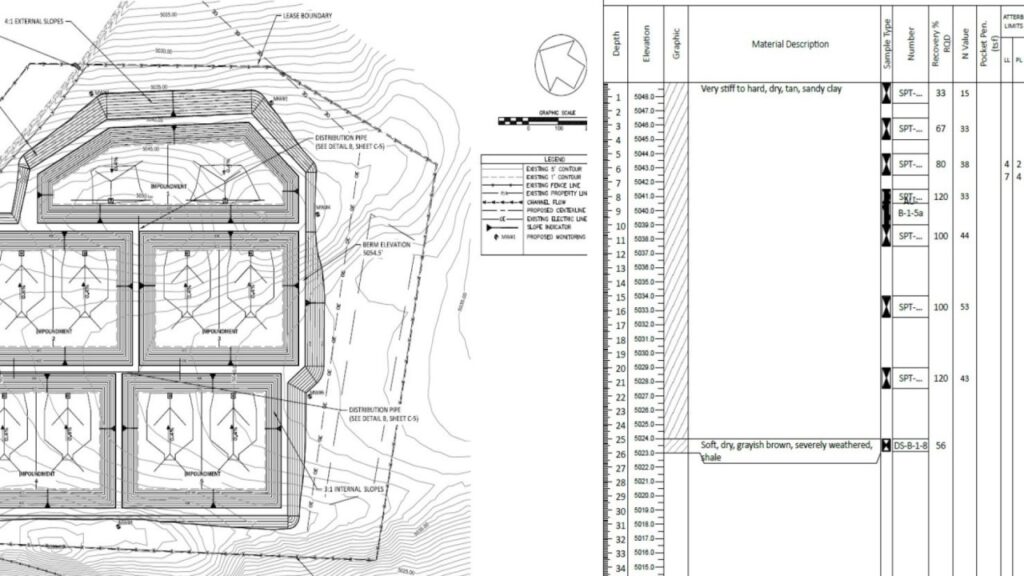A geotechnical investigation improves impoundment design by providing information about subsurface soil composition and geology. After drilling and sampling subsurface soils, a geotechnical report allows engineers to optimize impoundment construction specifications. It can also identify any subsurface issues on site, such as karst terrain (sinkholes) or shallow groundwater levels that may prohibit construction at the location.
By drilling and sampling subsurface soils, the engineer can determine the type and quality of material used to construct the impoundment. The design may be adapted to avoid rock that is difficult to excavate or help determine the proper outside slopes for the berms, depending on the soil’s tendency to erode. When shared with the construction contractor, this information can help prevent “surprise” change orders for changes in material/rock types encountered, as the contractor is made aware of these before bidding the job. The geotechnical investigation can also incorporate chemical testing of the soils and groundwater to establish the site’s background conditions before construction. With this approach, environmental hazards may be identified before construction that ultimately indemnify the operator prior to construction.
A topographical survey with control points performed by a licensed surveyor is essential in the design of the impoundment and serves to minimize and mitigate any change orders during construction. Utilizing a topographic survey, the engineer can reduce the amount of earthwork required while ensuring proper drainage around the facility.
The control points installed by a surveyor ensure that the design on paper can be accurately applied to the construction in the field. The topographical survey with control points is a legal document which records site conditions before construction and gives all parties a basis for dispute in the event of disagreement. Reliable control points translate the design on paper to construction in the field and can ultimately protect operators’ capital expenditures for water resources infrastructure.
Follow ALL Consulting on LinkedIn to see this Post, and more posts like this!
